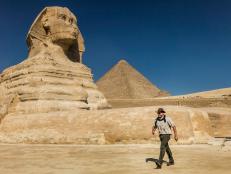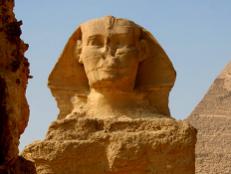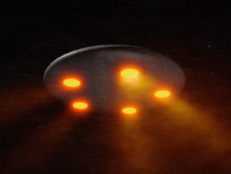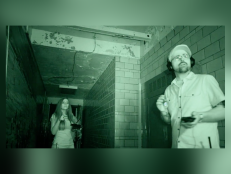What We Know About Cleopatra
For more than two thousand years, Cleopatra has been one of the best-known — and most notorious — women in the world. Could new technology rewrite the story of her legendary life?

Don Wildman is about to reunite with a femme fatale from his past: Cleopatra, the fabled queen whose daring plot to entrance a Roman conqueror also earned her an appearance on Mysteries at the Museum last year.
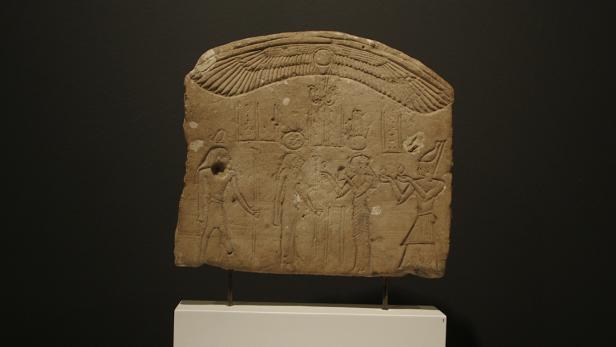
In this two-thousand-year-old carving, Cleopatra’s servants carry her into her brother’s palace — and a meeting with Julius Caesar — concealed in a roll of carpet.
In a new, special episode, the spotlight is all hers: Don travels to Alexandria to take a closer look at how the story of her extraordinary life took shape. As he’s about to learn, agendas and technology both play significant roles in that story. Consider how it continues to unfold.
Cleopatra’s Fabled Beauty Might Be...a Fable

It should go without saying that Cleopatra was a skillful seductress: After sneaking back into her brother’s palace and meeting with Julius Caesar, she won the general’s support and his heart. After Caesar’s assassination, in turn, she formed a legendary partnership with Mark Antony. Though she successfully wooed two of the most powerful men in Rome, skeptics argue that she was no Helen of Troy: Coins that were issued in Cleopatra’s lifetime (and rediscovered in recent years) portray her in a less-than-flattering manner.
Few Ancient Images of Cleopatra Exist
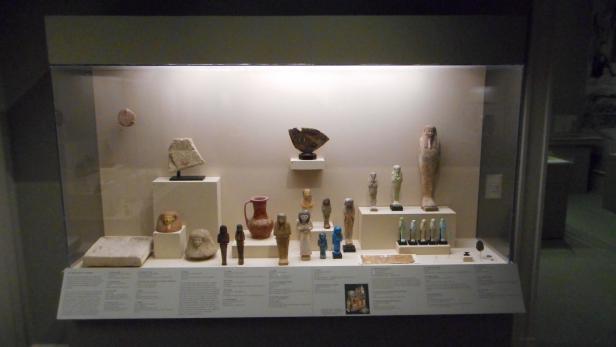
Artifacts from the Albany Institute of History and Art's wide-ranging ancient Egypt collection.
Though she has inspired legions of artists in the millennia after her death, few depictions available to us today date back to Cleopatra’s lifetime. If you think you’re looking at an image of the legendary queen, look twice: As the Egyptologist Joann Fletcher notes in Cleopatra the Great, “[f]rom her Egyptian-themed surroundings to her melon hairstyle and pearl jewellery, so many women adopted the ‘Cleopatra look’ that their statuary has often been mistaken for Cleopatra herself.”
She Wasn’t Egyptian
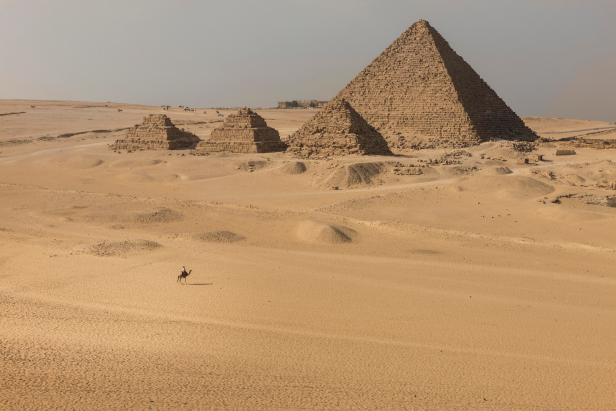
Sima Diab
The pyramids at Giza.
Though Cleopatra was born in Egypt, she wasn’t a native. When Alexander the Great — the king of Greece — conquered Egypt, he offered the empire as a gift to his star general, Ptolemy. For the next 250 years, Egypt was ruled by Greek pharaohs — and Cleopatra was born into that royal family, known as the Ptolemy line, in 69 BC.
She’s Said to Have Spoken Several Languages

Some scholars believe Cleopatra was the first member of her dynasty to learn to speak Egyptian — and that she learned between four and eight other languages for good measure. As Don learns when he visits the Library of Alexandria’s Antiquities Museum, medieval Islamic Egyptian texts credit her with far more intelligence and accomplishments than the Romans who disparaged her after her death did. Could the sexier (and more popular) version of her character represent, as Don calls it, a “chauvinistic view of history”?
She Didn’t Die for Love
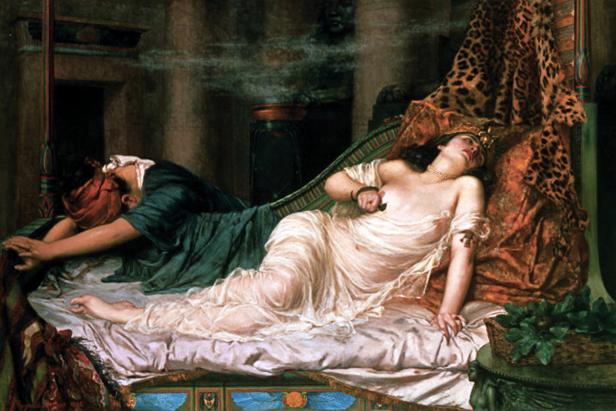
Though Antony and Cleopatra’s story ends, like Romeo and Juliet’s, in a double suicide, it isn’t a spectacle of star-crossed love in quite the same way: In a last-ditch effort to gain favor with the Roman emperor Octavius, Cleopatra tricked Antony into believing she had killed herself so that he would fall on his sword. When her lover’s demise failed to sway her enemy, the queen ended her life to avoid the shame of surrender. Some historians believe she arranged to have her body buried beside Antony’s as a final act of devotion — but we might never know for sure.
We Might Be on the Brink of Discovering Her Tomb

Sima Diab
The Sphinx and pyramids at Giza.
The soaring city Cleopatra ruled two thousand years ago is no more, thanks to a combination of battles and natural disasters — and if Cleopatra was buried there, her tomb was submerged in the sea (and finding it, Don argues, will be nearly impossible). If a team of archaeologists working 45 minutes outside the city in Taposiris Magna is on the right track, on the other hand, we might be on the verge of the greatest archaeological discovery in Egypt since King Tut’s tomb was reopened in 1922. Join Don as he examines the clues they’ve discovered to date, then ask yourself: Does this story end the way historians say it does?
Tune in for the premiere of Cleopatra: Mysteries at the Museum on Thursday, June 28 at 9 pm|8c.
